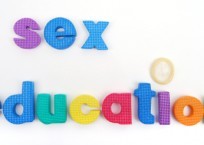
The poorly written, poorly thought-out, partisan “comprehensive sex ed” legislation concocted by State Senator Heather Steans (D-Chicago) should be roundly rejected. SB 1619, otherwise known by its obfuscatory title, “Personal Responsibility Education Act,” is yet another attempt by legislator-ideologues to use public money to normalize sexual immorality and perversion by inculcating children and teens with subjectivist, relativist assumptions about sexuality.
SB 1619 requires the following:
Provides that each class or course in comprehensive sex education offered in any of grades 6 through 12 shall include instruction on both abstinence and contraception for the prevention of pregnancy and sexually transmitted diseases, including HIV/AIDS (instead of instruction on the prevention, transmission, and spread of AIDS). Removes a provision that requires all public elementary, junior high, and senior high school classes that teach sex education and discuss sexual intercourse to emphasize that abstinence is the expected norm. Provides that all public elementary, junior high, and senior high school classes that teach sex education and discuss sexual intercourse shall satisfy specified criteria (instead of all sex education courses that discuss sexual intercourse shall satisfy specified criteria); makes changes to that criteria….Provides that the State Board of Education shall make available resource materials for educating children regarding sex education and may take into consideration the curriculum on this subject developed by other states, as well as any other curricular materials suggested by education experts and other groups that work on sex education issues. Provides that materials may include without limitation model sex education curriculums and sexual health education programs…. Provides that the Comprehensive Health Education Program shall include the educational area of evidence-based and medically accurate information regarding sexual abstinence (instead of the area of sexual abstinence until marriage).
The term “comprehensive sex ed” is a euphemism intended to convey positive connotations of wholeness and completeness. But as usual with sophistry, it is a deceit. The truth is comprehensive sex ed is incomprehensive, distorted and propelled by a subversive sexual ethic. Comprehensive sex educators seek to tell kids everything possible about sex except of course anything that challenges their subjectivist, relativist presuppositions and libertine social and political goals.
Below are a few of the “medically accurate” notions that comprehensive sexperts from the Sexuality Information and Education Council of the United States (SIECUS) think our children need to know. All of the following bulleted points are direct quotes from the “Guidelines for Comprehensive Sexuality Education,” which is the bible of the comprehensive sex ed movement. Unless, conservatives create a firestorm of opposition, this is what’s coming to Illinois public schools:
Boys and Girls Ages 5-8
- Human beings can love people of the same gender and people of another gender.
- Some people are homosexual, which means they can be attracted to and fall in love with someone of the same gender.
- Homosexual men and women are also known as gay men and lesbians.
- Two people may decide to marry or make a lifetime commitment to each other because they love each other and want to share their lives with each other.
- Many people live in lifetime committed relationships, even though they may not be legally married.
- Two people of the same gender can live in loving, lifetime committed relationships.
- Touching and rubbing one’s own genitals to feel good is called masturbation.
- Some boys and girls masturbate and others do not.
- Masturbation should be done in a private place.
- Girls and boys have many similarities and a few differences.
- Some people may expect or demand that boys and girls behave in certain ways, but this is beginning to change.
- Vaginal intercourse – when a penis is placed inside a vagina – is the most common way for a sperm and egg to join.
- Values are strong feelings or beliefs about important issues.
Ages 9-12
- Sexual orientation refers to a person’s physical and/or romantic attraction to an individual of the same and/or different gender.
- Some people are bisexual, which means they can be attracted to and fall in love with people of the same or another gender.
- People of all sexual orientations can have relationships that are equally fulfilling.
- Gender identity refers to a person’s internal sense of being male, female, or a combination of these.
- Transgender is also used as a general term to describe many different identities that exist such as “transsexual,” “drag king,” “drag queen,” “crossdresser,” “genderqueer,” “shapeshifter,” “bigendered,” and “androgyne.”
- All societies and cultures have transgender individuals.
- Some cultures around the world recognize and have special roles for transgender individuals.
- Children may have a mother, a mother and a father, two mothers, two fathers, or any other combination of adults who love and care for them.
- Boys and girls receive messages about how they should behave from their families, friends, the
media, and society.- The belief that all people of the same gender should behave the same way is called a stereotype.
- People often expect girls and boys to behave stereotypically.
- People are sometimes discriminated against because of biological sex, appearance, sexual orientation, gender identity, family, and living arrangements.
- Discrimination can lead to lower self-esteem, unequal opportunities, and physical and emotional
problems.- Discrimination has negative consequences for the individual, family, community, and society.
- A woman faced with an unintended pregnancy can carry the pregnancy to term and raise the baby, place the baby for adoption, or have an abortion to end the pregnancy.
Ages 12-15
- Most people have masturbated at some time in their lives.
- Gay, lesbian, bisexual, and heterosexual people come from all countries, cultures, races, ethnicities, socio-economic backgrounds, and religions.
- People do not choose their sexual orientation.
- Many scientific theories have concluded that sexual orientation cannot be changed by therapy or medicine.
- Some people’s gender identity differs from their biological sex. “Transgender” describes people whose internal sense of gender (gender identity) doesn’t match what society expects of them based on their genitals and chromosomes (biological sex).
- Accepting gender role stereotypes can limit a person’s life.
- People’s lives are enriched when they understand and celebrate diversity.
- Many people experience sexual and erotic thoughts called fantasies.
- Fantasies are one type of sexual expression.
- The right of a woman to have a legal abortion is guaranteed by the Supreme Court, although there are restrictions in some states.
- Values should be freely chosen after the alternatives and their consequences are evaluated.
- No one has the right to impose their values on others.
Ages 15-18
- Masturbation may be an important part of a couple’s sexual relationship.
- Being sexual with another person does not mean that masturbation must or should stop.
- Some sexual behaviors shared by partners include kissing; touching; talking; caressing; massaging; and oral, vaginal, or anal intercourse.
- Abstinence means voluntarily choosing not to engage in certain behaviors.
- Sexual abstinence means not engaging in any sexual behavior that can result in a pregnancy or STD, including HIV.
- People may have different ideas about what constitutes abstinence, from no sexual contact of any kind including kissing, to only abstaining from sexual intercourse, and all points in-between.
- Sexual partners should discuss what they mean by abstinence.
- Young teenagers are not mature enough for a sexual relationship that includes intercourse.
- Many adults believe school-age teenagers should not have sexual intercourse.
- There are many ways to give and receive sexual pleasure without having intercourse.
- Sexual orientation is determined by a combination of a person’s attractions, fantasies, and sexual behaviors.*
- Respecting the diversity of values and beliefs of other people is important.
- Some people use erotic photographs, movies, art, literature, or the Internet to enhance their sexual fantasies when alone or with a partner.
- A person whose religious or cultural teachings prohibit contraception may have to decide between those teachings, the risk of unintended pregnancy or STDs/HIV, and his/her decision to have vaginal, oral, or anal intercourse.
- Emergency contraception (the “morning after pill”) is not a method of abortion.
- Gender role stereotypes are harmful to both men and women.
- A growing number of congregations openly welcome gay, lesbian, bisexual, and transgender people.
This sexual act, that is, SB 1619, also includes the following bit of tricksy rhetoric from the tricksy Senator Steans:
“Medically accurate” means verified or supported by the weight of research conducted in compliance with accepted scientific methods and published in peer-reviewed journals, where applicable, or comprising information that leading professional organizations and agencies with relevant expertise in the field have recognized as accurate, objective, and complete.
It doesn’t take Sherlock Holmes or Antonin Scalia to deduce from this piece of sophistry where some mischief may derive.
- What does the phrase “where applicable” mean? Is it possible that there will be different standards used to evaluate abstinence curricula than comprehensive sex ed curricula? Might our comprehensive sex ed devotees demand that proposed abstinence-based curricula be supported by the weight of research published in peer-reviewed journals, while the same evaluative standards will be deemed not applicable when it comes to comprehensive sex ed curricula?
- Are the peers who are doing the reviewing biased in favor of the comprehensive sex ed ideology?
- Who decides which “leading professional organizations and agencies” will be used? Who determines what constitutes “relevant expertise” for determining accuracy, objectivity, and completeness? Clearly Siecus’ refusal to use the correct term “Gender Identity Disorder,” preferring instead the euphemism “transgender,” is evidence that Siecus is neither accurate nor objective.
In case our more obtuse legislators haven’t noticed, typical comprehensive sex ed curricula, like the one from Siecus, are dripping with subjectivity.
SB 1619 defines important terms, but guess which one is conveniently omitted: “abstinence.” Such a glaring omission should embarrass Steans, but nothing like a little intellectual sloppiness can embarrass or stand in the way of liberal dogmatists bent on shaping other people’s kids into their philosophical image using other people’s money.
Some questions for Senator Steans:
- What does “abstinence” mean in the castrated context of her bill? If with the stroke of a pen Steans severs abstinence from marriage, what does abstinence mean? Abstain for how long? Abstain for a month, a semester, a year? Abstain until when? Until age 16, 17, 18? Abstain until teens are “ready”? How is readiness measured? Abstain until teens are in a committed relationship? How is commitment determined? Abstain until they’re in love?
- Abstain from what? From just vaginal intercourse or all erotic interactions. Does abstinence include abstaining from sodomy, oral sex, mutual masturbation, bestiality, and paraphilias?
For those who are unfamiliar with Steans, her district includes the homosexual neighborhood colloquially referred to as “Boys Town.” She has sponsored legislation to legalize same-sex “marriage,” to provide domestic benefits to homosexual partners, to legalize homosexual civil unions, and to permit those who electively amputate healthy parts of their sexual anatomy to change their gender on their drivers’ licenses. Clearly, Steans has an unholy mission to transform the social, political, and legal landscape of Illinois, and her presumptuous scheme now includes Illinois children.
Some may wonder why the obsession with jettisoning the words “until marriage” from the Illinois law. There are two reasons: 1. Sexual subversives see no inherent value or meaning in reserving sexual activity for marriage and want to promote their desacralized, diminished view of sex to the next generation. 2. The panties of sexual subversives are all in a bunch because homosexuals can’t marry in Illinois. If our laws and sex ed curricula communicate that people should not have sex until marriage, then ipso facto, homosexuals should not have sex. There are certain ideas that our diversity disciples just won’t tolerate.
Illinoisans should oppose this bill like their kids’ lives depend on it.
* The extreme leftwing organization SIECUS explains that “sexual orientaion is determined by a combination of a person’s attractions, fantasies, and sexual behaviors.” Imagine permitting any other group constituted by attractions, fantasies, and behaviors–sexual or otherwise–to be established as a legally protected class. What fatuous thinking.

























